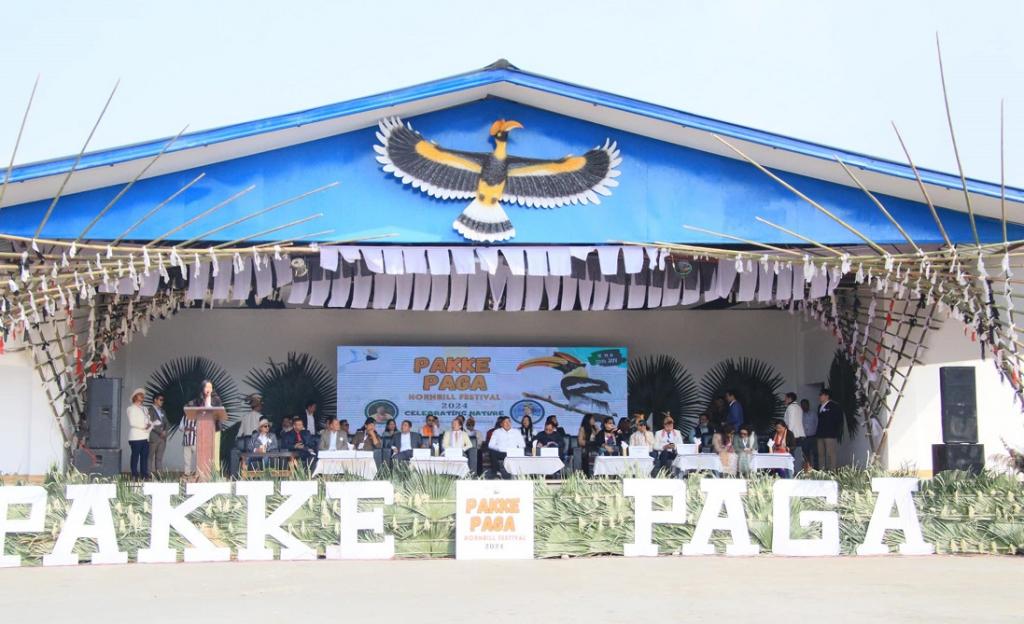Pakke Paga Hornbill Festival begins in Arunachal; effective conservation of iconic birds urged (DTE)

- 19 Jan 2024
Why is it in the News?
The 9th edition of the Pakke Paga Hornbill Festival (PPHF) commenced in the town of Seijosa in Arunachal Pradesh’s Pakke Kessang district on January 18, 2024, with a call to protect and conserve hornbills.
About Pakke Paga Hornbill Festival:
- The first Pakke Paga Hornbill Festival (PPHF) took place in 2015 with the primary goal of acknowledging the Nyishi tribal group's significant role in hornbill conservation within the Pakke Tiger Reserve (PTR).
- Additionally, the festival aimed to generate alternative sources of income for the region and raise awareness across India about the marvels of PTR and its surroundings.
- The current year's festival is themed "Domutoh Domutoh, Paga hum Domutoh," meaning 'Let Our Hornbills Remain' in the Nyishi language.
- The focus of this year's festival is to emphasize the crucial importance of preserving these iconic birds.
About the Great Indian Hornbill:
- The Great Indian Hornbill is a bird family found in tropical and subtropical Africa, Asia, and Melanesia.
- It is the state bird of Kerala and Arunachal Pradesh in India.
- The Great Indian Hornbill is now considered “Vulnerable” due to high hunting pressure, habitat loss, and deforestation.
Key Facts About Pakke Tiger Reserve:
- Pakke Tiger Reserve is located in the East Kameng district of Arunachal Pradesh.
- It is bordered by the Tenga Reserve Forest to the North, the Doimara Reserve Forest to the West, and Nameri National Park and Tiger Reserve (Assam) to the South.
- The region exhibits high species diversity and endemicity, acting as a transitional zone between the Indian and Malayan ecoregions.
- Located North of the Brahmaputra River, Pakke Tiger Reserve is positioned in the transition zone between the Assam plains and the hilly forests of Arunachal Pradesh.
- Vegetation primarily comprises tropical evergreen and semi-evergreen forests.
- Flora: Notable flora includes Polyalthia simiarum, Pterospermum acerifolium, Sterculia alata, Stereospermum chelonioides, Ailanthus grandis, and Duabanga grandiflor. Additionally, about eight species of bamboo are found in the area.
- Fauna: The fauna of the reserve includes iconic species like the Tiger and elephant, as well as predators such as the Leopard and the Clouded leopard, contributing to the rich biodiversity of the region.
